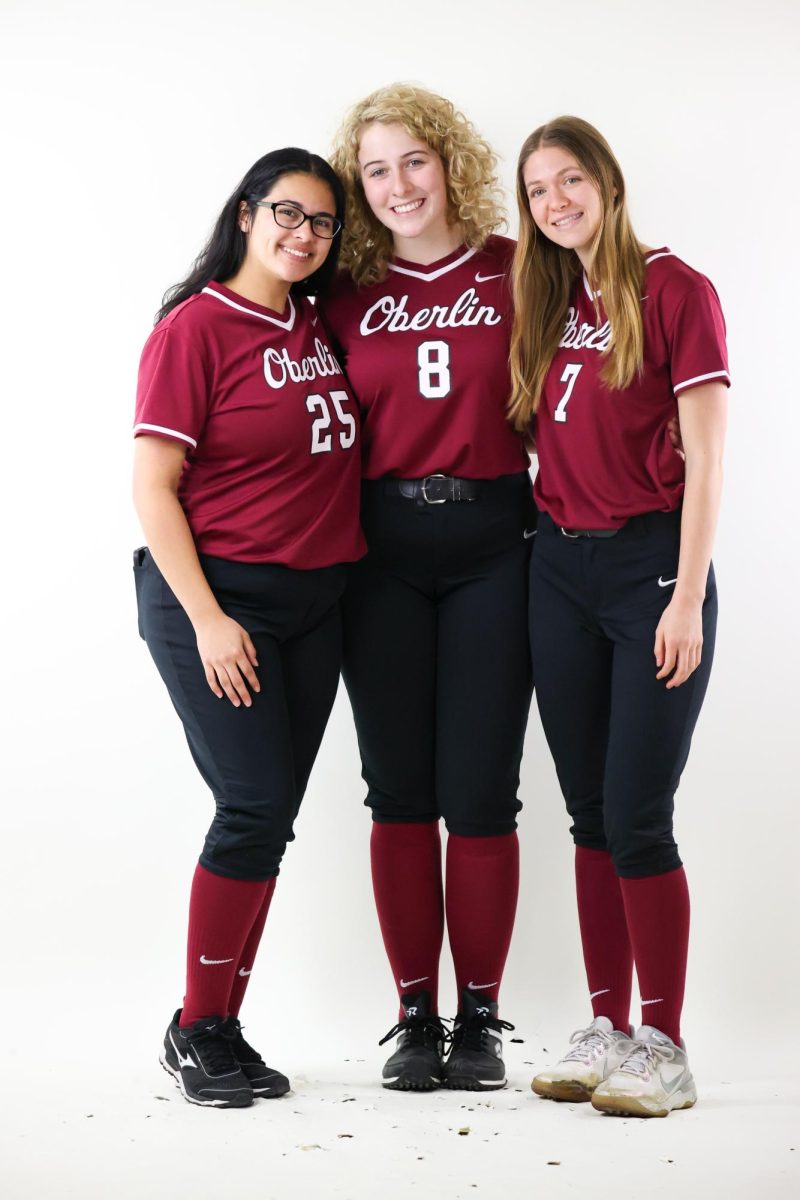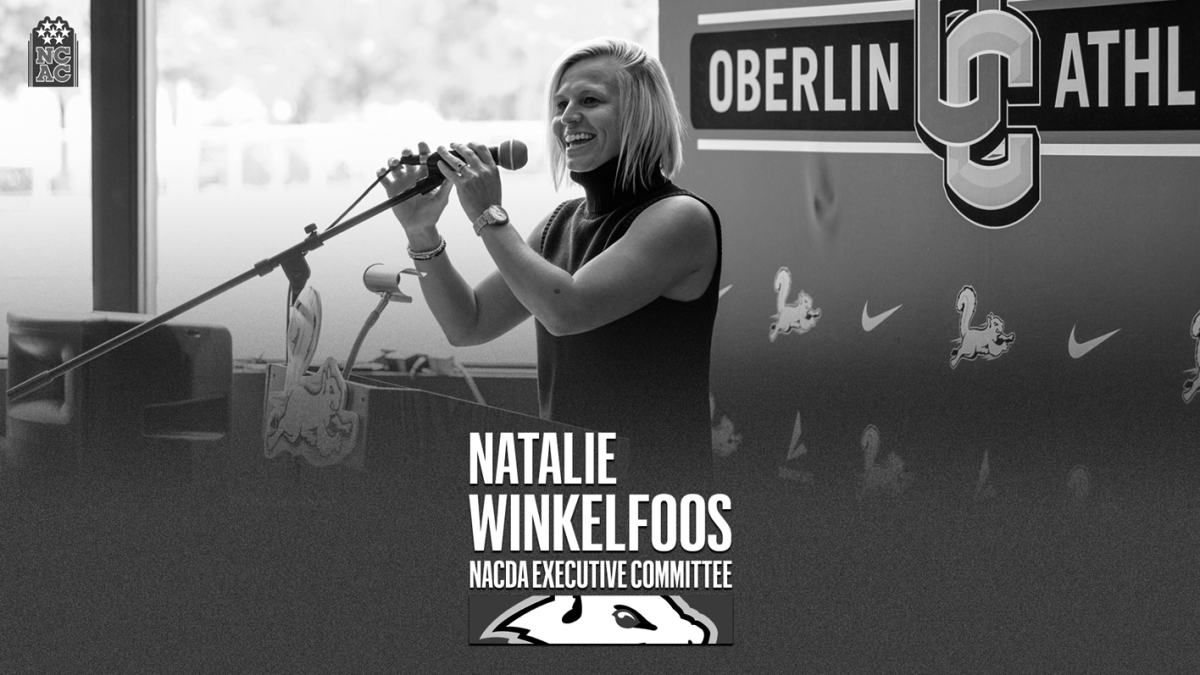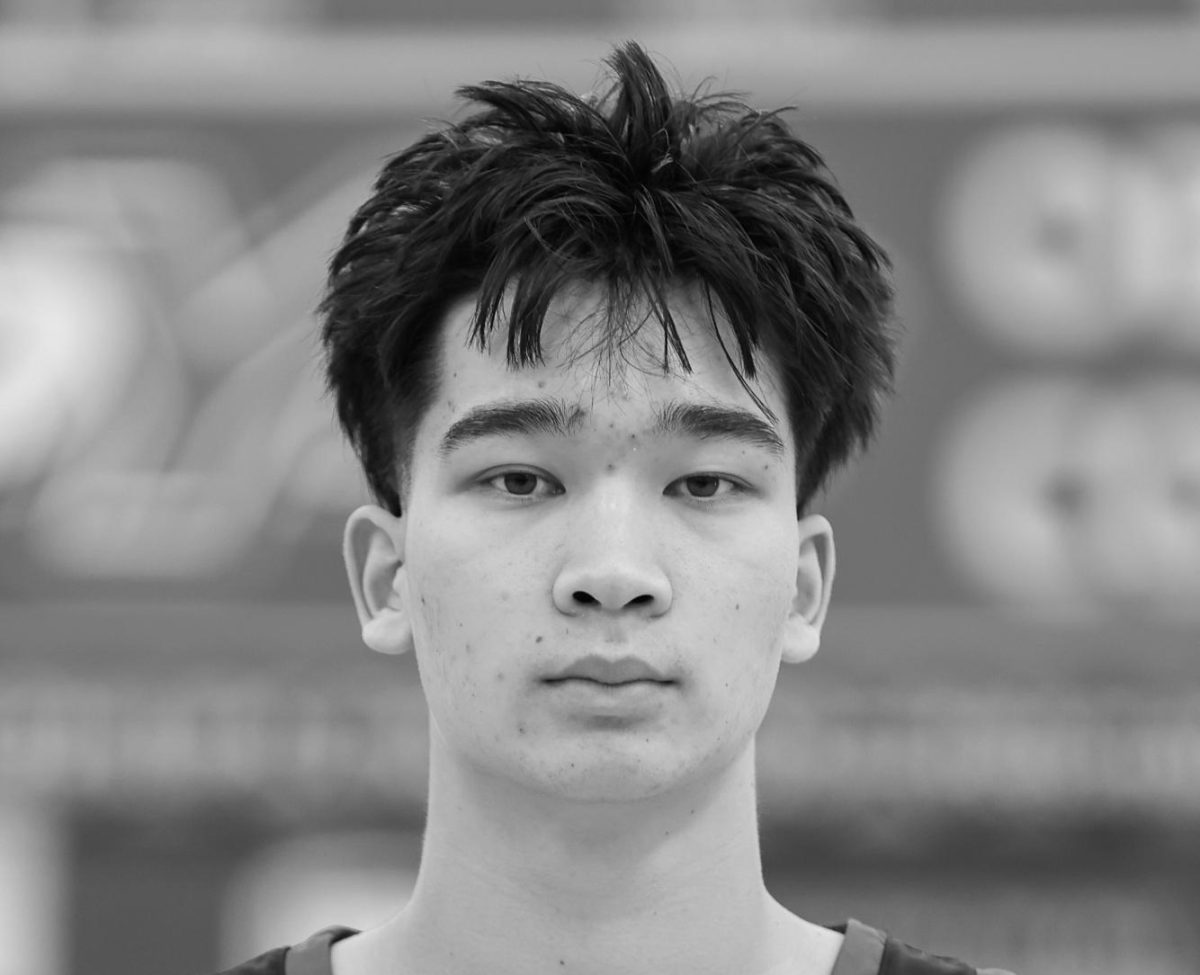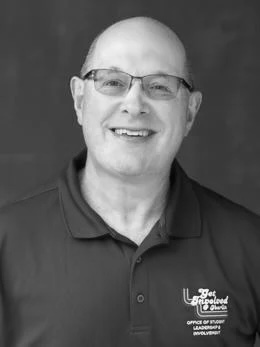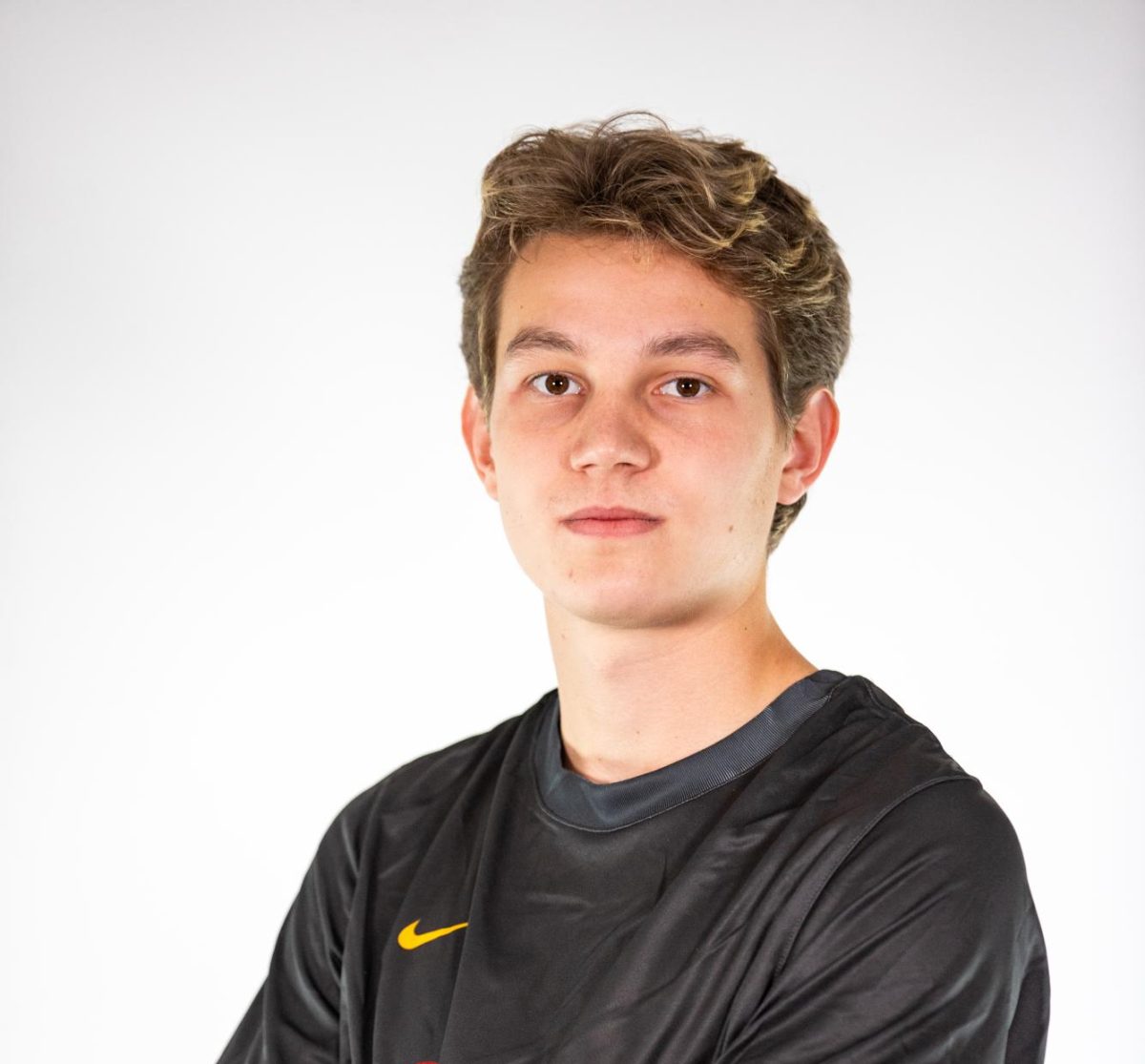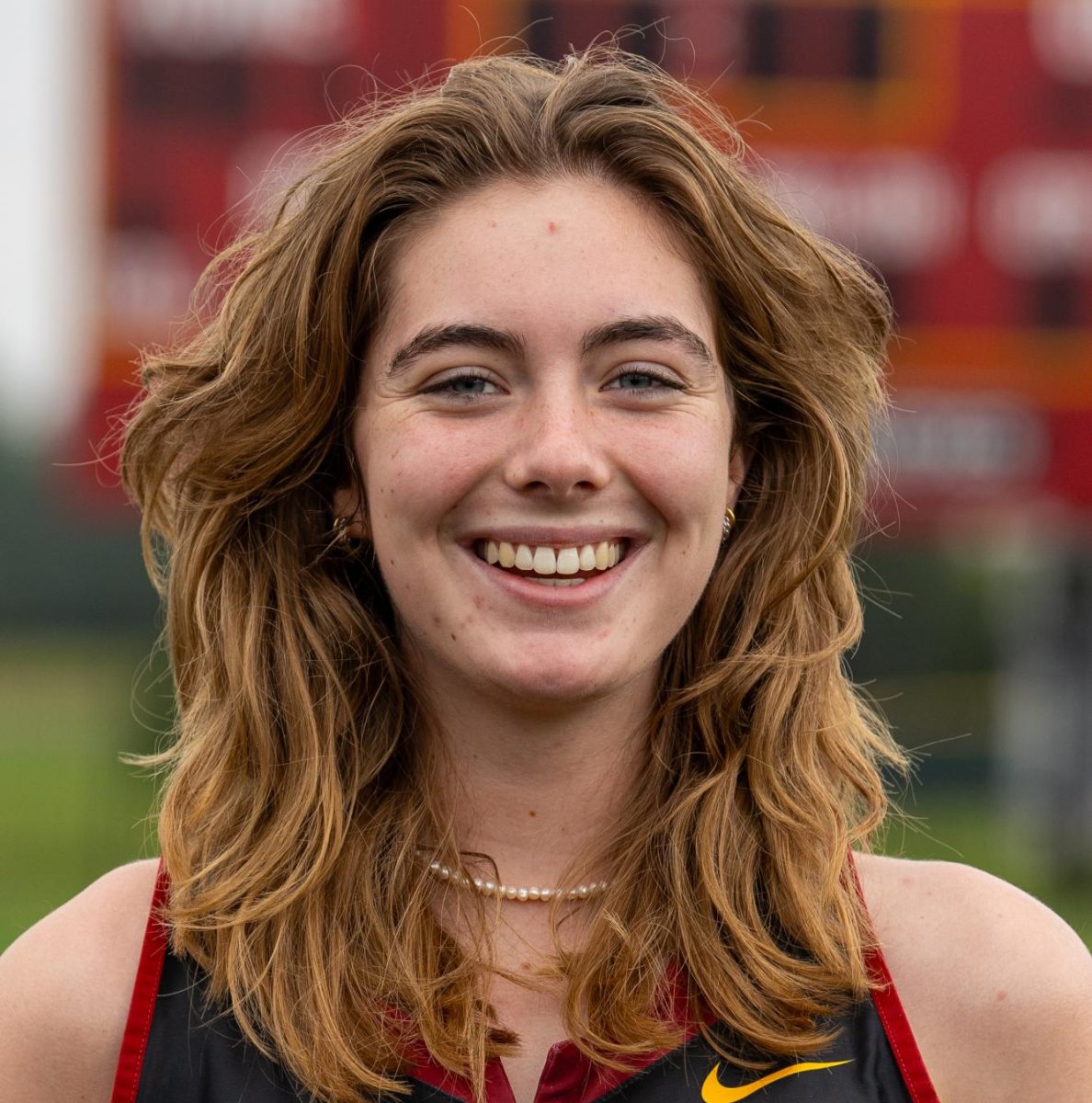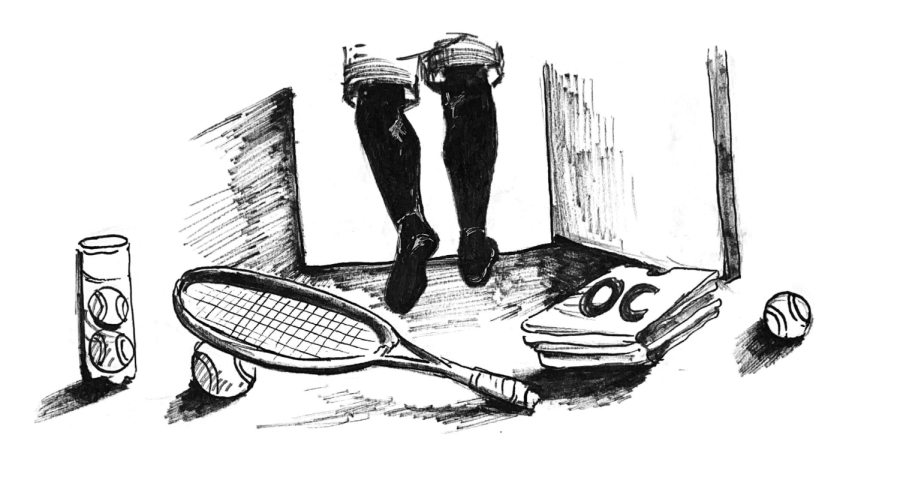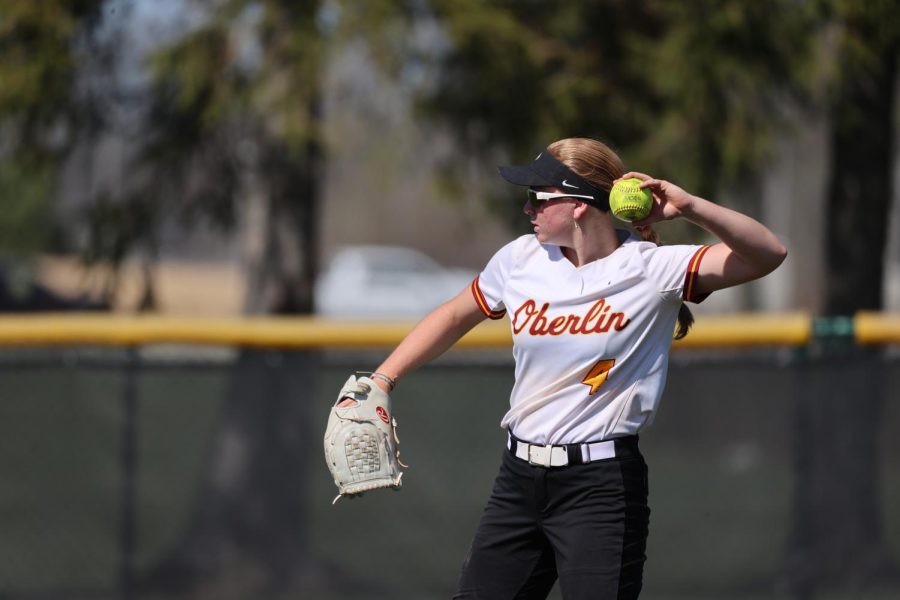Katie Austin, Mia Brito, and Alaina Di Dio are fourth-years on the softball team in addition to being captains and housemates. Austin is a Chemistry and Biochemistry major from San Diego, Brito is a History major from Covina, CA, and Di Dio is a Psychology major from Whitmore Lake, MI.
Since softball is a spring sport, they do not participate in games in the fall — except for Fall Ball, one day when the team can play up to three games. On Oct. 7, the team hosted Ursuline College, an NCAA Division II school, and lost 6–4.
“We played a DII [team], but we were definitely able to hold our own, which was great,” Brito said. “We lost a few players from last year, so it’s taken us a while to see where all the pieces are going to be for this year. Especially after play day, we have a much clearer idea of how our defense is going to shape up, and it’s looking really good.”
Throughout the fall the team is allotted a set number of practices, which start in early September. After these, the team then transitions to captains’ practices for the rest of the fall, led by Austin, Brito, and Di Dio. In addition, they lift two to three times a week.
The three housemates have all played softball for many years. Austin has been playing since elementary school.
“It was the first sport I ever played and I just stuck with it because I like pitching so much,” Austin said. “[I] essentially [have] control on the mound and we just get to be outside with our friends. It’s a good environment and it teaches you a lot. I’ve learned so much about dedication and teamwork from travel ball and then playing in college, and it builds a really strong community.”
Brito has been playing softball since she was four years old. She hasn’t stopped playing because her mom never got the opportunity to continue playing after high school.
“I really like it, but I mostly play because my mom didn’t get to,” Brito said. “She had my brother when she was 17, [so] she had to quit. So, I keep playing for her.”
Di Dio credits softball as her break from school, which motivated her to keep playing at Oberlin.
“In high school and now, it’s a time to get away from academics and responsibilities,” Di Dio said. “It’s like structured hanging-out time with your friends; it’s your favorite people and you get to see them every day. Our team is so close-knit.”
In their house, the fourth-years have a cherished cone, a softball tradition. Each year, the softball fourth-years pass on a giant megaphone cone to the next group of fourth-years, with each graduating class signing the interior. Maria Roussos, OC ’18, came back during homecoming and noticed the megaphone cone sitting in their living room.
“She goes, ‘I cannot believe you guys still have this cone,’” Di Dio said. “And we’re like, ‘What?’ She’s like, ‘I started this when I was in school, when I was a [first-year].’ One of her [fourth-years] gave it to her. When you’re a [fourth-year], you sign the cone — under the cone, there’s a list of names from all these years past. She came and saw it in our house and she’s like, ‘I am so glad someone still has it. I thought it’d be thrown away right now. But I like that you guys are keeping the tradition forward. You have to give it to the next house.’”
Outside of softball, the three are constantly busy with other extracurricular activities, which the team is incredibly supportive of. Over the summer, Brito had the opportunity to study in Japan through the Luce Initiative on Asian Studies and the Environment Grant as an East Asian Studies minor. When she did her LIASE presentation at the beginning of the school year, the team came and watched her present. When Di Dio presented at the Undergraduate Research Symposium last year, she received similar support from her teammates and coaches who came to her presentation.
Since her second year at Oberlin, Brito has worked at the Multicultural Resource Center and as a manager at the Dionysus Disco. Over the last year and a half, she has been working with 15 different minority student groups on an archive for minority student groups on campus. She has gotten the school to approve a digital database, which will be uploaded to the Oberlin College Library server, and a physical archive, which will be in Wilder Hall. After Oberlin, she plans to take a gap year on campus to continue working on this project. Later, she plans to go into information science and archiving with a focus on social justice, library science, and information access.
“There’s not many schools that are doing that,” Brito said. “I’m very excited.”
Di Dio is a peer tutor for Psychology and Statistics classes as well as a PRSM trainer on campus. She has been in multiple labs and assisted Visiting Assistant Professor of Politics Adam J. Howat in formulating a study investigating political identity and affective polarization. She currently does research at the Michigan State University Twin Registry, where she’s mainly focused on studying the etiology and development of externalizing behavior, specifically antisocial behavior. She presented her research in Spain at the annual meeting of the Behavior Genetics Association. She’s currently applying to Ph.D. programs in clinical science and psychology, where she hopes to continue her work or go into the field of behavioral genetics.
Austin does research in the Ryno Lab in the Biochemistry department, looking at changes in the transcriptome of arabinose-treated E. coli. This summer, she participated in a nuclear and radiochemistry summer school program at San Jose State University, where she learned about the basics of nuclear chemistry and visited the Livermore National Laboratory and the Lawrence Berkeley National Laboratory. Now, she’s looking at graduate schools for radiochemistry or biochemistry.
When asked about advice she would give to her first-year self, Austin was nostalgic about her time here.
“Just enjoy the things that Oberlin has to offer, because it’s going by so quickly,” Austin said. “It’s over already, and we have to cherish these last moments, like going to Long Island Night.”
Di Dio believes that one’s first-year and fourth-year selves are very different.
“A lot changes between first year and fourth year,” Di Dio said. “You think you might have it figured out, but you don’t — roll with the changes.”


